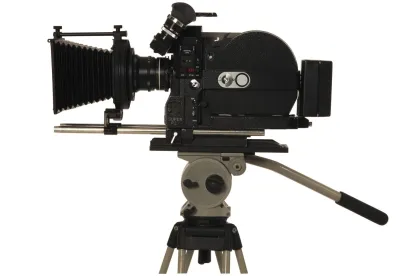As more and more courts grapple with the Coronavirus Public Health Emergency, many are issuing Administrative Orders with provisions for conducting business via teleconference or videoconference. Most courts and litigators are familiar with holding status conferences and discovery dispute hearings by phone conference. But what should courts and parties do about complex hearings such as Markman hearings while social distancing measures are in place, especially if witnesses may be called? And what about using technology to take remote depositions to keep cases moving toward completion?
Leveraging Existing Video Recording Capabilities for Remote Hearings
In the Northern District of California, the recent Emergency Administrative Order permits conducting hearings by teleconference or video conference. A pilot program for video recording of hearings, which is already in place in this Court, may provide a road-map for how to hold hearings by video conference.
Under this program, the Northern District of California has been authorized by the Judicial Conference of the United States and the Ninth Circuit Judicial Council to record and post proceedings on uscourts.gov following parties’ consent to national Pilot Guidelines. Under the guidelines, procedures have been set up to allow a party having a hearing before participating judges in the Northern District, as well as the Western District of Washington and Guam, to request video recording of the hearing (including Markman and Summary Judgment hearings). A request must be made at least 21 calendar days before the scheduled hearing date, and these procedures also afford parties the opportunity to object to the recording of the hearing or portions thereof. The procedures recommend at least three but no more than four cameras fixed on the judge, witnesses lawyer’s podium and/or counsel tables, plus a feed from the electronic evidence presentation system. Recordings of the proceedings are subsequently posted to the uscourts.gov website.
To-date, the program has been used in about fifty cases, including one patent-related case, where it was used to record a technology tutorial hearing in front of Judge William Alsup. This provides a great example of how remote video technology can be used to conduct a hearing. Importantly, rather than having a three or four cameras in the courtroom, there can be a video feed from the Judge, from counsel for each party, and for the material being presented, each shown simultaneously in a separate window. The procedures for requesting and objecting to use of video recording, and handling video files, should otherwise be applicable to video conference hearings.
If the parties are interested in holding remote hearings with their presiding courts, whether in the Northern District of California or elsewhere, it is recommended that the parties first inquire whether the court will allow video conferencing platforms such as Skype or Zoom to be used for the hearing. For example, Chief Judge Lynn of the Northern District of Texas has been reported as being open to parties interested in conducting videoconference hearings during the pandemic. In all cases, it is worth asking how the court has handled remote hearings, or would prefer to handle them, as many software tools are now available. The parties should also ask whether there are special procedures that need to be followed, for example, for submitting exhibits or demonstratives, questioning witnesses, or handling of the video files. In the absence of existing procedures, those of the NDCA Pilot Program may provide useful guidance.
Conducting Remote Depositions, with or without Video Recording
Many court reporting services can conduct remote witness depositions via telephone. Several such services also offer real-time video and video-recorded remote depositions. For example, Veritext offers a web-based platform for conducting remote video depositions. For these services, Veritext recommends using a computer with a web camera, a telephone and an at least 5 Mbits/sec (upload and download) internet connection. The telephone provides a layer of redundancy that allows the deposition to proceed by audio if the internet connection is disrupted. Remote video deposition services provide video images of the witness, real-time transcripts and the ability to display exhibits through the platform. The platform also includes an integrated instant messaging feature to allow public/private text messaging to be shared with others appearing at the deposition remotely.
Such web-based deposition platforms are essentially specialized videoconference applications with the witness and participating attorneys appearing in respective live stream video windows. The court reporter is also connected to create the written transcript and a real-time feed can be displayed in a window to allow each attorney to review and privately highlight the transcript or make annotations. Exhibits can be uploaded to a private folder and then marked and displayed as an exhibit in a window that the witness and counsel can see. Past experience with these apps has shown that they are intuitive and easy for attorneys and paralegals to use.
In the future, we expect increased reliance on web-based video depositions and that depositions by electronic means will become the norm. While at the present time FRCP 30(b)(4) requires a stipulation or court order for a deposition to be taken by telephone or other remote means, the current pandemic may offer an opportunity for parties and courts to be more willing to agree to such an option.
Special Procedures and Practices for Remote Hearings and Depositions
For all these remote options, attorneys should discuss methodologies for making objections during the hearing or deposition, ideally with each other and with the Court. It is easy to accidentally interrupt or talk over others during a remote hearing or deposition, even with video, because of possible audio lag and also because the normal cues of body language are not as evident. Such interruptions muddy the record and makes it less useful than a live event. Thoughtful planning and attention to decorum can, however, mitigate this risk. For example, as in most teleconferences, it is helpful to identify yourself before speaking and allow for pauses between speakers, so that other participants have an opportunity to respond.
Also, whenever a hearing or deposition is conducted remotely, it important that attorneys provide clear verbal statements to help the Court and witnesses navigate exhibits and demonstratives. These statements include clear and repeated references to the exhibit or demonstrative at issue, including explicit references to the particular page, paragraph, or line that is the subject of questioning. These statements are necessary because non-verbal cues, such as checking to see what the attorney is reading, are not possible. Such statements have the added benefit of making the written transcript easier to follow.
Finally, when using remote deposition applications, attorneys should make sure that the technology allows the questioning side to monitor the witness and their attorney in such a manner to control coaching of the witness. This helps ensure the creation of a record that is not improperly influenced by the deponent’s counsel.
Conclusion
Existing video conference technologies allow for hearings and depositions to be conducted remotely. As more and more courts require litigation at a distance in view of the COVID-19 pandemic, and litigators and litigants become comfortable with using video conferencing to do business, we expect the use of these technologies for remote hearing and depositions will become more widespread. This may, in turn, have the added benefit of reducing the cost of litigation.






 />i
/>i

